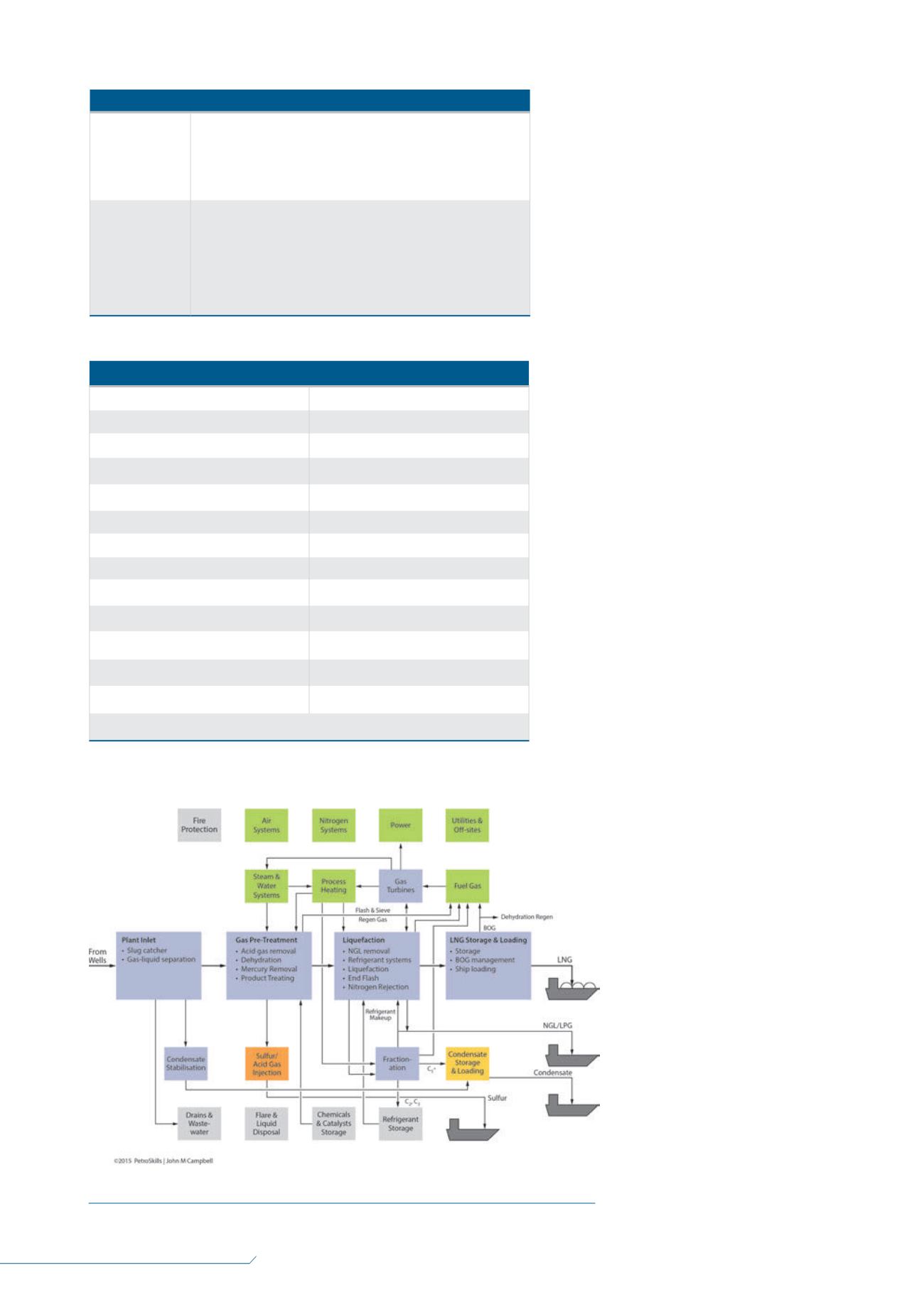
90
LNG
INDUSTRY
MARCH
2016
LNG training: engineers
and operations
technicians
This article covers the training structure for gas
production, baseload liquefaction and regasification
terminals. Important characteristics of engineer and
operations training are summarised in Table 1.
Engineering duties are usually medium to
longer term. However, unit contact engineers often
have urgent assignments. Engineering is discussed
later in this article.
In contrast, operating technicians’ work is
usually more immediate. They operate in the
middle of the LNG plant and handle its operation.
Gas processing and LNG
plants
Figure 1 illustrates the main processing and utility
blocks. Baseload LNG plants represent enormous
project management, engineering, procurement
and construction (EPC) challenges. Mostly, they are
large gas processing plants in remote locations.
They involve complex and specialised cryogenic
liquefaction, product storage and shipping.
Furthermore, they contain some of the largest
compressors and other equipment in the oil and gas
industry.
Processes clearly specific to LNG, as contrasted
to the broad range of gas processing, include the
following:
The liquefaction block’s processes handling
mixed refrigerants (MR), and/or ethylene,
methane cycles.
LNG storage and boil-off gas (BOG).
LNG loading and shipping.
The remaining blocks in Figure 1
largely draw upon traditional gas
processing technology. This contrast is
summarised in Table 2.
It is mainly with the liquefaction
processes below, for example, -40°C
(-40°F) that a clear and interesting
specialisation appears. However, the
complex liquefaction technologies are
underpinned by the subcooling and
economiser principles found in
propane refrigeration systems.
This is certainly not to diminish the
technology, sophistication and
complexity of LNG liquefaction,
storage and shipping, but rather to put
them in perspective within the overall
LNG plant facilities.
The new and fast growing mini
and micro LNG plants extend training
needs to an increasing number of
plants with minimum staffing levels.
These all require the basic gas
processing to be correct. They also
introduce a different set of skills
Figure 1.
Main process units of an LNG plant.
Table 1.
Contrasting LNG engineer and operator training
Engineers
More abstract. Some mathematics and applied engineering
principles. Often quite intense. Connect basic chemistry and
physics to how an LNG plant works. Engineering principles of key
equipment including off-sites and utilities. In most cases, learning
is in the office or classroom
Operations
Generally specific to the plant down to equipment numbers
and drawings, flowsheets, equipment data, etc. Practical
demonstrations of scientific and engineering principles. Detailed
‘operation’ knowledge of individual equipment. Context of
the operators’ day-to-day duties. Stop short of valve-by-valve
procedures. Combination of classroom learning with skill
verification and evidence recording in the field
Table 2.
Process technologies of gas plants and LNG units
Mainstream gas processing
LNG processes
Producing wells (offshore/onshore)
Gas/oil/condensate gathering lines
Field dehydration (glycol), etc.
Inlet separation/slug catchers
Condensate stabilisation
Gas sweetening (amine, etc.)
Gas dehydration
–
molecular sieve
Mercury removal
Propane refrigeration
Mixed or cascade refrigeration
Natural gas liquids (NGL) extraction
Cryogenic liquid expanders
LPG storage and shipping
LNG storage and BOG
Nitrogen rejection
LNG shipping
*
*
Shipping of liquefied gases has a long history in certain regions


